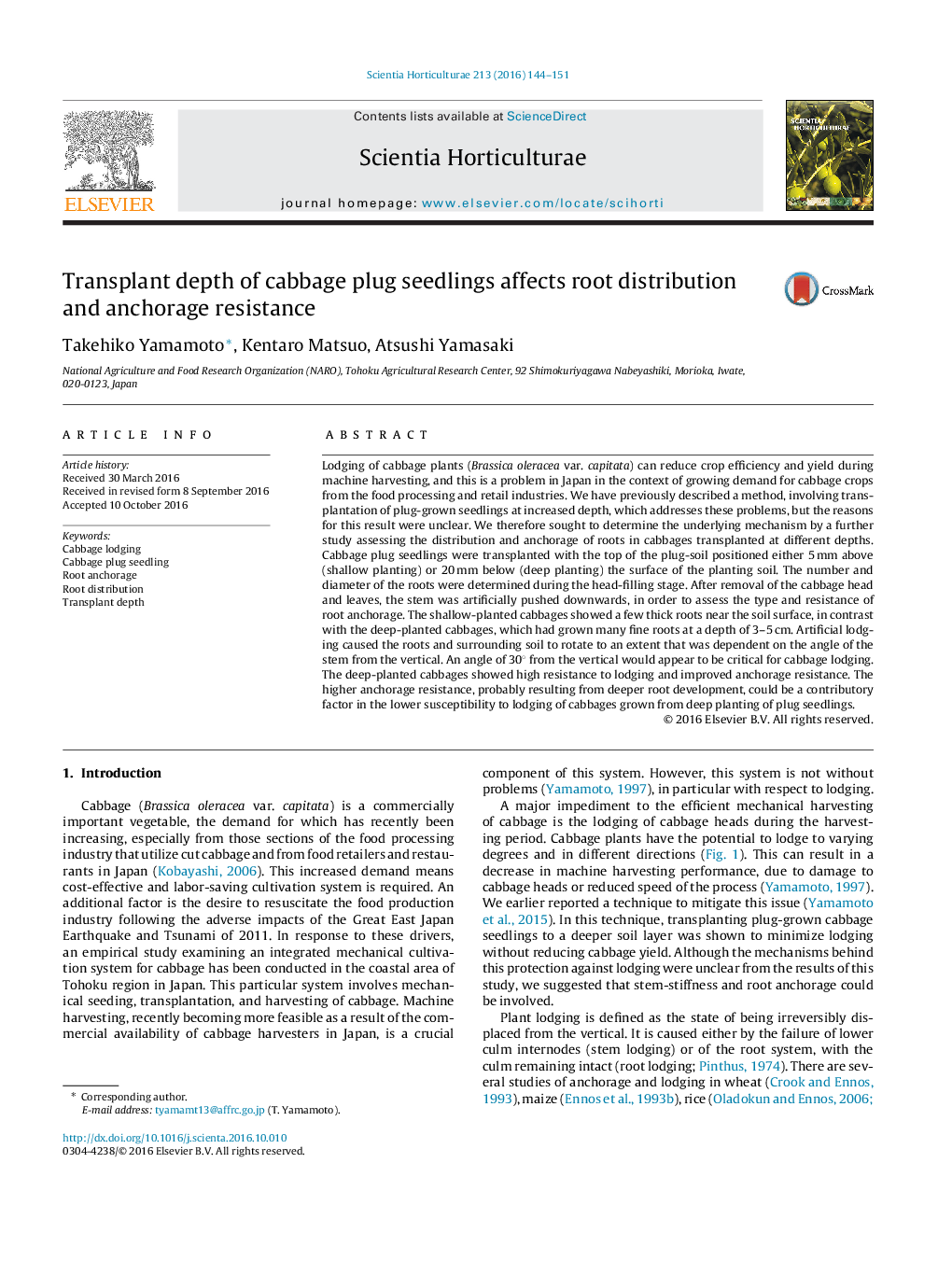| Article ID | Journal | Published Year | Pages | File Type |
|---|---|---|---|---|
| 4565894 | Scientia Horticulturae | 2016 | 8 Pages |
•Lodging of cabbage is a major issue affecting harvesting efficiency and yield.•Deeper-planted cabbages have high resistance to lodging.•Deeper root development probably contributes to the low susceptibility of lodging.
Lodging of cabbage plants (Brassica oleracea var. capitata) can reduce crop efficiency and yield during machine harvesting, and this is a problem in Japan in the context of growing demand for cabbage crops from the food processing and retail industries. We have previously described a method, involving transplantation of plug-grown seedlings at increased depth, which addresses these problems, but the reasons for this result were unclear. We therefore sought to determine the underlying mechanism by a further study assessing the distribution and anchorage of roots in cabbages transplanted at different depths. Cabbage plug seedlings were transplanted with the top of the plug-soil positioned either 5 mm above (shallow planting) or 20 mm below (deep planting) the surface of the planting soil. The number and diameter of the roots were determined during the head-filling stage. After removal of the cabbage head and leaves, the stem was artificially pushed downwards, in order to assess the type and resistance of root anchorage. The shallow-planted cabbages showed a few thick roots near the soil surface, in contrast with the deep-planted cabbages, which had grown many fine roots at a depth of 3–5 cm. Artificial lodging caused the roots and surrounding soil to rotate to an extent that was dependent on the angle of the stem from the vertical. An angle of 30° from the vertical would appear to be critical for cabbage lodging. The deep-planted cabbages showed high resistance to lodging and improved anchorage resistance. The higher anchorage resistance, probably resulting from deeper root development, could be a contributory factor in the lower susceptibility to lodging of cabbages grown from deep planting of plug seedlings.
